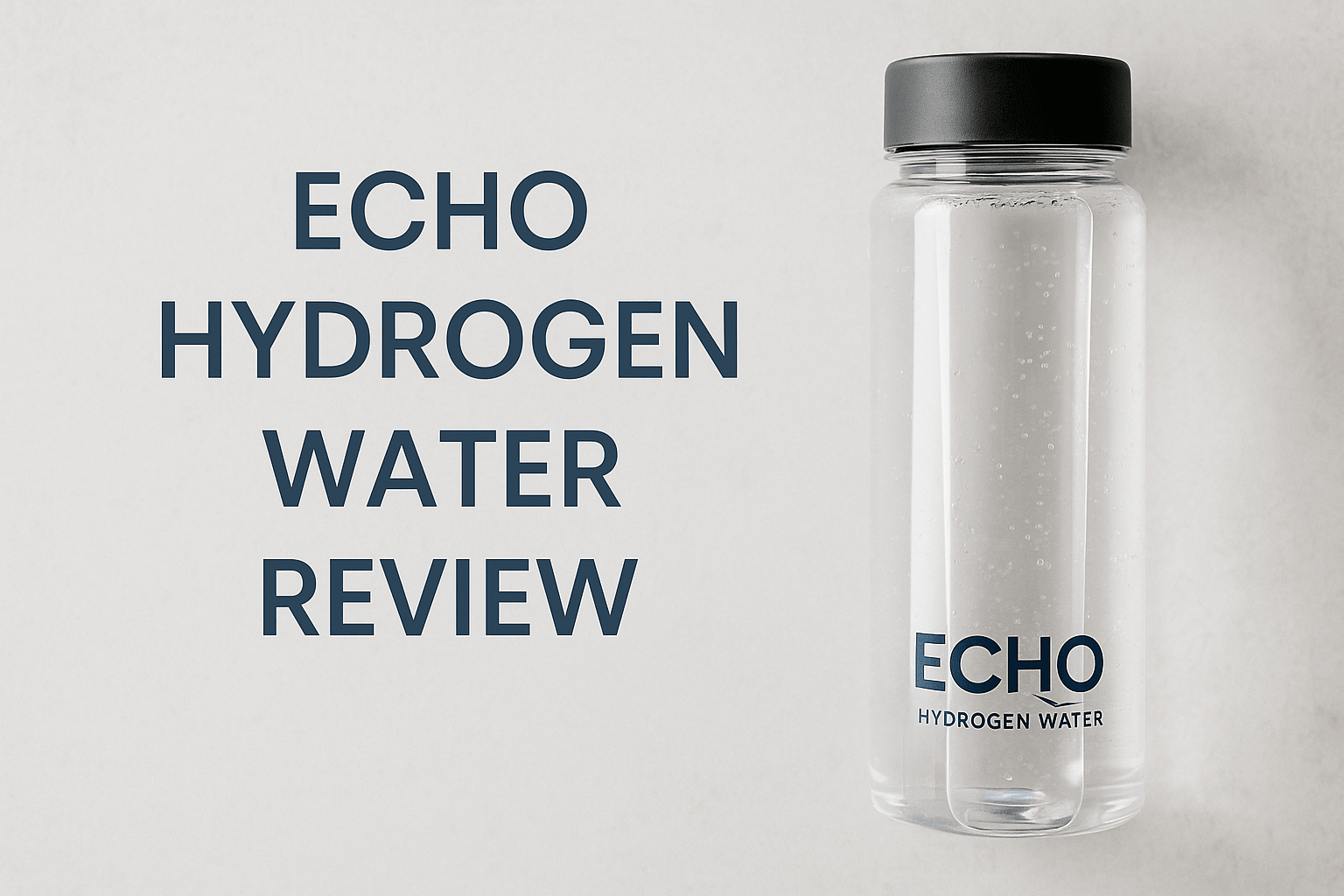
Echo Hydrogen Water Machines: Models, Features, and Value
From portable bottles to premium under-sink systems—compare Echo’s lineup with collection-style tables, badges, and editor picks.
Echo’s devices use electrolysis to add dissolved molecular hydrogen (H₂) to water. Models range from simple pitchers to sophisticated under-sink systems. If you’re new, start with the Ultimate Guide and the FAQ.
Key Takeaways
- Multiple Echo models at different price points and installs (portable, countertop, under-sink).
- Focus on hydrogen ppm, filtration, and ease of daily use—match to your goals.
- For comparisons, see Buying Guide and Best Machines (2025).
Fundamentals
Hydrogen water is regular water infused with dissolved molecular hydrogen (H₂). Echo systems use electrolysis (titanium/platinum electrodes; often with PEM) to generate H₂ and dissolve it into your drinking water. Learn more: how H₂ water is made · H₂ vs alkaline water · how long H₂ stays in water.
Echo Hydrogen Water Machines: Product Review & Technology
Echo’s lineup spans portable bottles (Echo Go™, Echo Flask), the Pitcher, and home systems like Echo H2®, Echo Ultimate, and Echo Flow. Echo highlights hydrogen enrichment with minimal pH change (except modes on Ultimate).
Home Systems Comparison
Badges call out best-fit picks; table is compact and mobile-friendly.
| Model | H₂ PPM | Water Modes & Use | Highlights |
|---|---|---|---|

|
Up to ~1.6 | Neutral H₂, Alkaline H₂, HOCl, Filtered; touch controls; direct line install | Four water types; multi-stage filtration; premium build; see buying guide |

|
~0.8–1.2 | Neutral H₂ focus; on-demand; pre-filtration + electrolysis | Hydrogen without pH change; straightforward install; H₂ vs alkaline |

|
Model-dependent | Under-sink supply; dedicated faucet option; family-friendly access | Space-saving; steady availability; pairs with whole-home filtration |
Portable & Pitcher Comparison
| Model | H₂ PPM | Use Case | Highlights |
|---|---|---|---|

|
~0.5–0.8 | Gym, commute, travel | Rechargeable; minutes-to-fresh; great for athletes |

|
~0.8–1.0 | Daily carry | Durable build; longer battery; chilled retention |

|
~0.3–0.5 | Entry-level home | No electricity; simple upkeep; 1.5 L capacity |
Want deeper specs? See Bottle vs Machine and our 2025 roundup.
Our Picks
Editor’s Pick — Home System
Echo Ultimate for households that want multi-mode water (neutral H₂, alkaline H₂, HOCl) plus robust filtration.
- Up to ~1.6 ppm; four water types via touch controls
- Direct line install; daily output for families
- Great if you also want HOCl for surfaces

Editor’s Pick — Portable
Echo Go™ for on-the-go freshness—run a quick cycle right before you drink to keep ppm higher at sip time.
- Rechargeable and travel-friendly
- Pairs well with cold storage to slow off-gassing
- Ideal around workouts and commute

Performance, Benefits & Long-Term Value
Hydrogen Production & Antioxidant Properties
Echo systems use electrolysis (often with a proton exchange membrane) to generate dissolved H₂. Reported concentrations commonly target ~0.8–1.6 ppm. For background on potential effects, see hydrogen water benefits and our athlete guide.
Filtration, pH & Water Quality
Units include multi-stage filtration (e.g., sediment + carbon + specialty media) to prep water before H₂ infusion. Some models focus on neutral pH H₂ (e.g., Echo H2®), while Ultimate offers multiple modes. Learn more: H₂ vs alkaline ionizers.
User Experience & Cost
Compared with bottled H₂ water, home generation can reduce per-glass costs significantly over time—especially for families. See our Buying Guide for maintenance and filter cadence details.
Recommended Dosage & Timing
Common daily use: 1–3 glasses (8–12 oz each) of fresh hydrogen water. Time servings around focus blocks or workouts for practical benefits.
| When | Why it can help |
|---|---|
| Morning | Start the day with fresh H₂ |
| Pre-workout | Prepare for oxidative load |
| Post-workout | Support early recovery |
| Between meals | Hydration without heavy digestion |
New to H₂? Begin with one glass and adjust. See using H₂ for maximum benefits.
Methods & Setup

Pick the format that fits your space and routine. Compare bottle vs machine and skim our Buying Guide before purchasing.
Countertop / Under-Sink
- Connect water line and power per manual.
- Run flush/clean cycles as directed.
- Set preferred mode (neutral H₂, etc.).
Portable / Pitcher
- Use clean, filtered water.
- Run a generation cycle minutes before drinking.
- Keep cold and sealed between sips.
Storage: Keep the Hydrogen You Made
- Use airtight glass or stainless containers; minimize headspace.
- Refrigerate to slow off-gassing; avoid heat/sun.
- Once opened, aim to drink within ~30 minutes.
Details: how to store H₂ water · dissipation timing
Frequently Asked Questions

